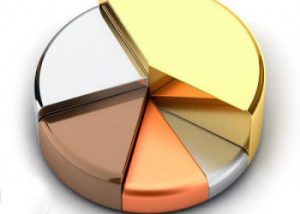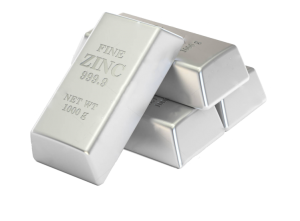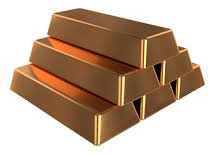Introduction of base metals
base metals is a term known as non-ferritic metal (such as lead, tin, copper, zinc, nickel, bronze, aluminum, etc.).
This is the name given to this group for many years (because of their variety of colors). It can be said that any metal that has a non-ferrous base falls into this group.
The base metal is usually used informally to refer to a metal that is easily oxidized or corroded and reacts alternately with dilute hydrochloric acid to produce hydrogen.
The term base metals is coined because these materials are inexpensive and are found mostly in precious metals such as gold, silver and platinum. Base metals are often more abundant in nature and are sometimes easier to extract. This makes base metals much cheaper to use in production than precious metals.
as gold, silver and platinum. Base metals are often more abundant in nature and are sometimes easier to extract. This makes base metals much cheaper to use in production than precious metals.
In general, metals found in nature are classified into two categories:
ferrous metals and non-ferrous metals. Iron and its alloys and compounds such as cast iron, etc. are considered as ferrous metals.
Each of them has many applications in industrial and public uses. According to statistics, about 90% of the parts and equipment of industrial and non-industrial machines, as well as their products and real estate, are made of ferrous metals.
One of the most important reasons that ferrous metals are used a lot in various industrial applications is the high strength of these metals and their abundance in nature.
All metals except iron and real estate and its compounds are classified as non-ferrous metals. Each of the heavy metals is used and productive in various industrial and manufacturing fields.
Very important groups such as aluminum, copper, tin, lead, zinc, gold, silver, platinum and manganese and alloys of each of them fall into this category. Base metal and alloy groups of this large family of metals have a special place in the economy.
At present, there is a very large chain from mining to processing various metals (from the production of ingots, slabs, billets, sheets to profiles, rods, wires, pipes, etc.) in our country, which ultimately countless goods and parts of them in industry. Various are produced, used and delivered to consumers.
Types of non-ferrous metals
-
aluminium
Aluminum is classified as a non-ferrous metal and has a specific gravity of 2.7. Also, the temperature at which aluminum metal reaches its melting point is 658 degrees Celsius.
One of its most important properties is the transmission of electricity as well as heat transfer. Aluminum metal has a very good resistance compared to copper metal and is resistant to corrosion and decay, and because it weighs significantly less, it is known as a light metal.
It is used and exploited in various industrial applications. Aluminum metal is combined with other types of non-ferrous metals or ferrous metals to make various and very useful alloys.
Because this metal has very good strength and resistance to rot and corrosion, and at the same time has a low weight, it is widely used in sensitive industries such as aircraft.
-
Copper
Copper is one of the most widely used base metals in nature. The color of this metal is red with a special polish. Its specific gravity is 8.9 and it melts at a temperature of 1084 degrees Celsius. The ore is heated in special furnaces, the copper is melted and separated from the excess material.
copper is melted and separated from the excess material.
Therefore, it is usually 99 to 99.9% pure. If they want to get copper in pure percentage, they refine it by electric current (electrolysis).
This metal has a very good resistance against rot and corrosion and is also very resistant to oxide and rust. The reason for the resistance of copper metal against rust is that the outer layer of copper metal reacts strongly to the weather and oxidizes, and as a protective layer, protects the inner part of the metal from rust and oxide.
Copper metal is an excellent conductor of electricity. This metal has different applications and uses in different industrial and general sectors. The most important of them are used in the production of all kinds of wires, pipes, handles, doors and windows, as well as electric magnets and magnetic motors, and in the preparation of all kinds of kitchen utensils and many other things.
-
Lead
Lead metal is one of the most important non-ferrous metals. The color of this metal is grayish and the temperature at which this metal reaches the melting point is 337 degrees Celsius.
which this metal reaches the melting point is 337 degrees Celsius.
Also, the specific gravity of lead metal is 11.34. The degree of longitudinal expansion for lead metal is very high. This metal can not show much resistance to oxide and rust.
Lead metal is known as a very soft metal. This metal is used in various types of building structures, in the construction of pipes and ceilings, in the design and decoration of palaces and churches. Lead metal is used in car batteries, as well as in the ceramic industry and many other industries.
-
Zinc
Zinc has long been used in the lives of various human races. Our ancestors, for example, used zinc to make their war particles. Zinc metal is considered as one of the most widely used non-ferrous metals.
The color of zinc metal is bluish, but if we pay attention to the fracture on the zinc metal, this part is very shiny.
Zinc is obtained from smelting ore. Zinc is used in alloys such as bronze, brass and solders. The specific gravity of zinc metal as one of the non-ferrous metals is 7.3 and the temperature at which the zinc metal reaches its melting point is 419 degrees Celsius.
The metal shows excellent resistance to oxides and rust and is also a brittle metal. One of the most important uses of zinc metal is in galvanized steel sheets and also in alloys such as brass and bronze. Zinc metal is extracted by smelting ore.
-
Nickel
Nickel is one of the most widely used non-ferrous metals and is found as a relatively hard metal in nature. This metal has a color between white and silver.
Nickel reaches its melting point at a very high temperature of 1453° C, and since its melting temperature is very high, it is very resistant to the effects of the weather.
its melting temperature is very high, it is very resistant to the effects of the weather.
The specific gravity of nickel metals is 8.9. Nickel, iron, and magnesium are usually combined to form nickel. The most important use of nickel metal in applications related to the electronics industry, wires and cables in this industry.
Nickel metal is also used in the production of various steel alloys. Nickel is used to make nickel and copper pipes, as well as to desalinate plants and convert saline water to liquid water.
It is widely used to make coins and nickel steel for armor and keys, and it can also be used to make nichrome and permaloy alloys and copper alloys.
Nickel is used to make green glass. Nickel plates can play a protective role against other metals. Nickel is also a catalyst for hydrogenating vegetable oils. Also, ceramic industry and making alloys of iron and nickel, which has magnetic properties and strong batteries are used.
-
Bronze
Bronze is an alloy obtained from 90% copper and 10% tin, and its color is darker and more copper-colored than copper. Its specific gravity is 5.8 and it melts at 930 ° C. Other properties are similar to those of rice.

-
Tin
The color of white tin is silver and slightly bluish. Its specific gravity is 7.3 and it melts at 232 ° C. The properties of this metal include high degree of expansion, ease of bending, resistance to decay and acids and its softness. This metal is made from tin ore.
Tin is also sold in the market in the form of ingots weighing 25 to 45 kg. Tin is used to make bronze and soft solders and to coat copper utensils in bleaching.

Advantages and disadvantages of base metals
The main advantage of base metals is their cheapness. Base metals serve many purposes such as construction as well as or better than precious metals. In addition, some base metals have unique properties that cannot be replicated by other metals.
Nickel , for example, is a major component of stainless steel, with zinc entering galvanized steel as a protection against corrosion, and the Roman Empire used lead for many purposes, including pipes, baths, cosmetics, and paint.
Base metals also have several notable forms, not all of which make them suitable as a currency for precious metals. The first drawback is that they are usually not so valuable .
Other notable disadvantages of basic metals are their chemical properties and price fluctuations . Base metals produce less durable currencies because they are easier to oxidize and darken.
The price of base metals is also usually more volatile due to their widespread use for industrial purposes. When industrial demand falls, the price of base metals can fall.
In general, the benefits include the following:
- Extensive application in industry and production
- It is abundant and easily extracted
- Market prices lower than precious metals
In general, the disadvantages include the following:
- The chemical properties of metals change over time
- Metal prices can be quite volatile
- Not a good store for value
Investment of base or base metals
There are many reasons why investing in the base metals market is an attractive choice. Existence of many mines and reserves in Iran, cheap labor and also relatively reasonable fuel prices make this group of metals a suitable option for export. Investing in well-exported markets these days can be a smart and smart choice.
Several exchanges around the world offer basic metals trading contracts, but the hub of international trade is still the London Metal Exchange (LME). In the United States, the Chicago Mercantile Exchange (CME) offers futures contracts for base metals.
Frequently Asked Questions about base metals
-
Is iron ore a base metal?
Although iron rusts when exposed to the weather, iron is not a base metal.
-
What are the most expensive base metals?
Tin is the most expensive base metal. Then nickel, copper and then zinc are placed.
